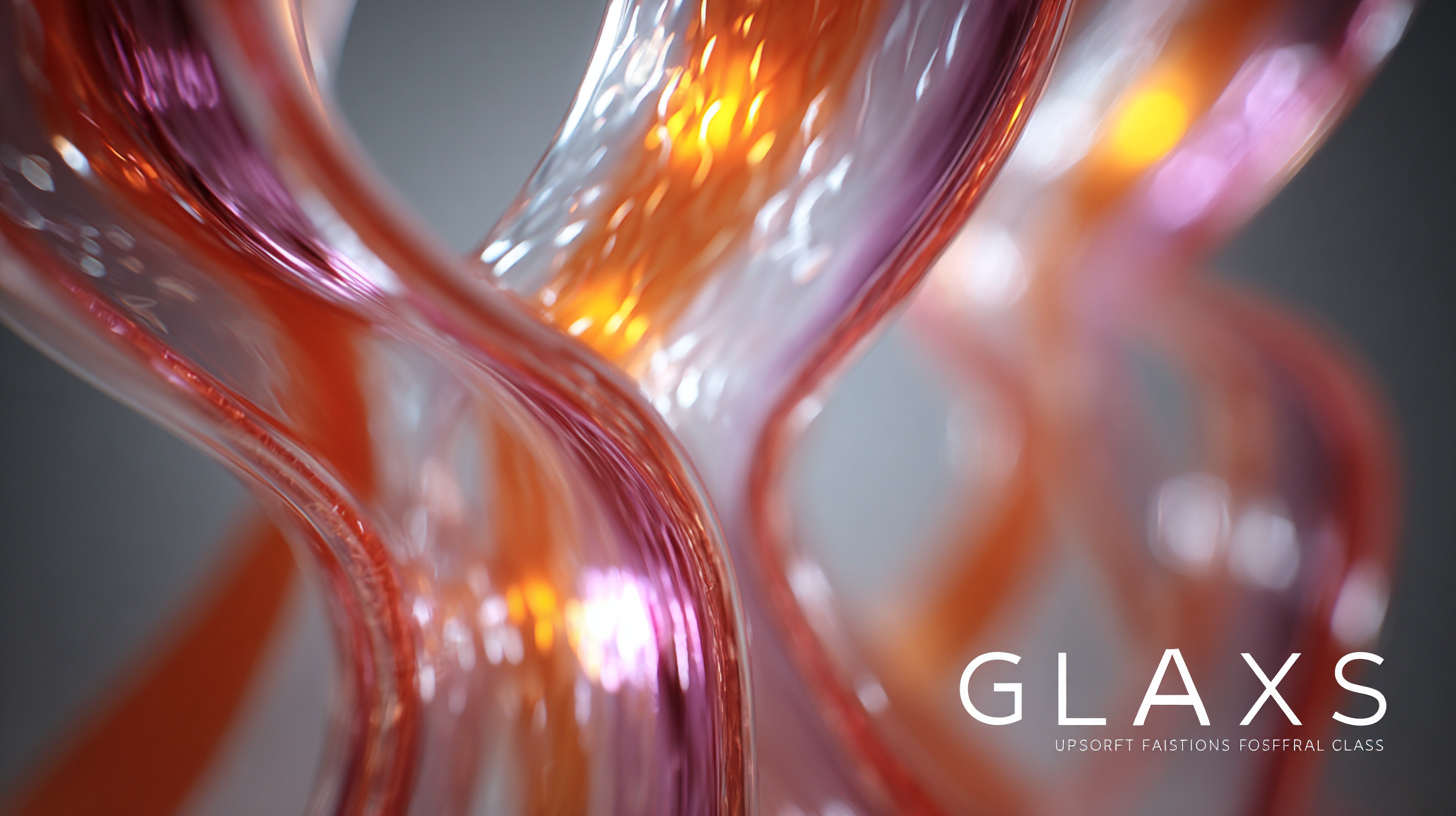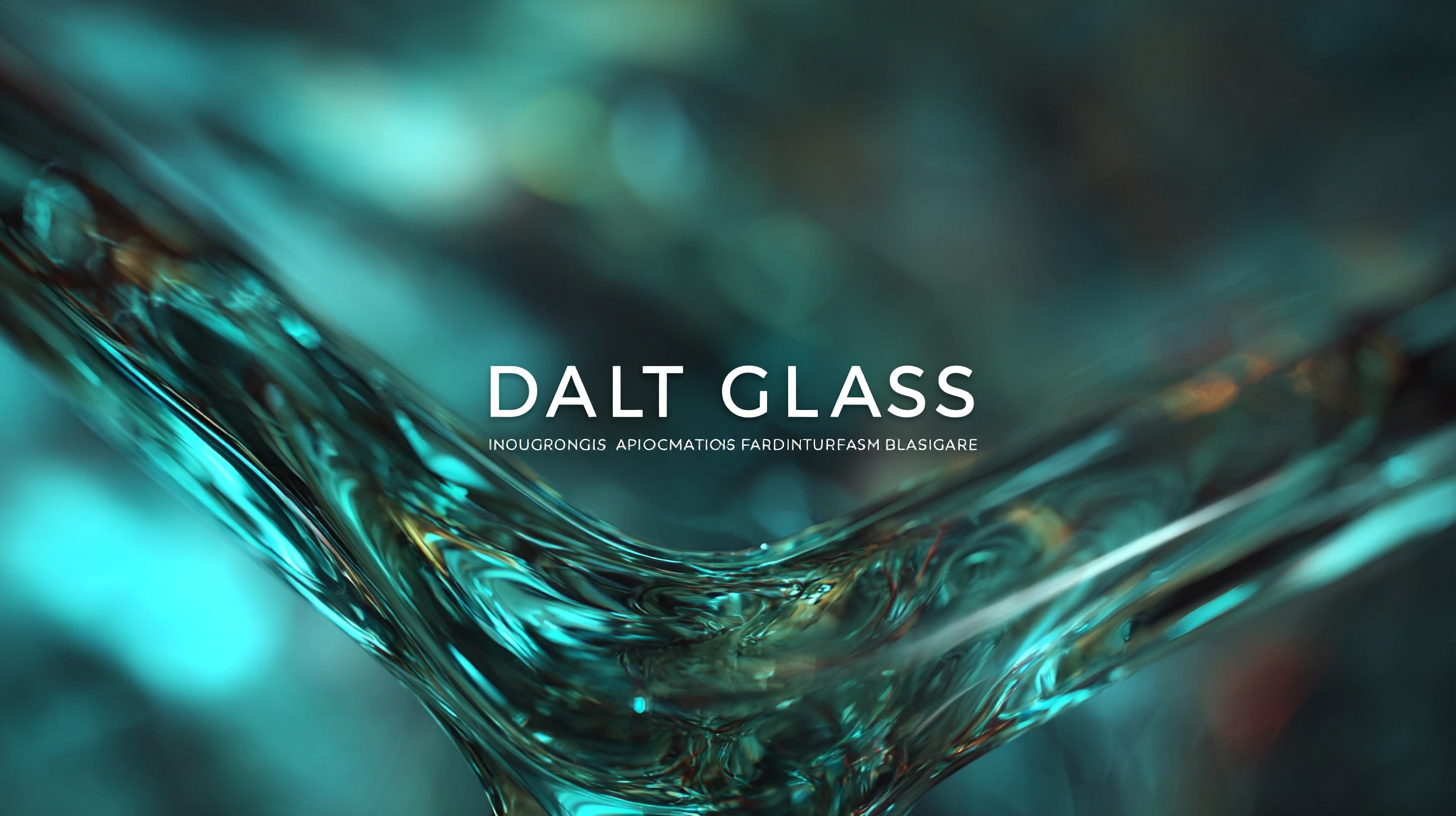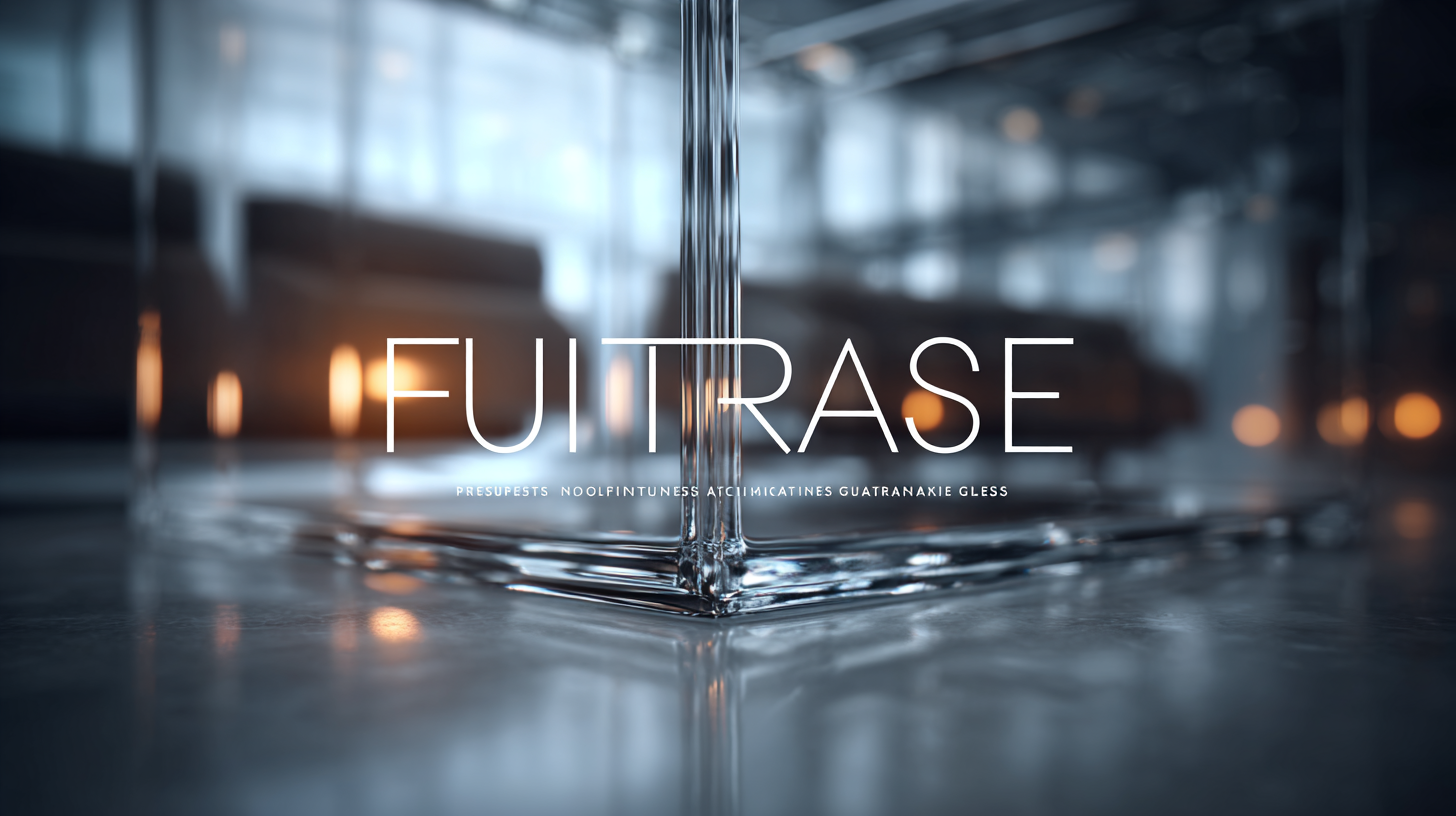
- English
- Español
- Português
- русский
- Français
- 日本語
- Deutsch
- tiếng Việt
- Italiano
- Nederlands
- ภาษาไทย
- Polski
- 한국어
- Svenska
- magyar
- Malay
- বাংলা ভাষার
- Dansk
- Suomi
- हिन्दी
- Pilipino
- Türkçe
- Gaeilge
- العربية
- Indonesia
- Norsk
- تمل
- český
- ελληνικά
- український
- Javanese
- فارسی
- தமிழ்
- తెలుగు
- नेपाली
- Burmese
- български
- ລາວ
- Latine
- Қазақша
- Euskal
- Azərbaycan
- Slovenský jazyk
- Македонски
- Lietuvos
- Eesti Keel
- Română
- Slovenski

Exploring Innovative Applications of Best Furniture Glass in Modern Design
In recent years, the furniture glass market has experienced significant growth, driven by the rising demand for aesthetically appealing and functional design solutions. According to a report by Grand View Research, the global furniture glass market size was valued at approximately $1.3 billion in 2022, with expectations to expand at a CAGR of 6.5% from 2023 to 2030. This trend underscores the growing appreciation for elegant and durable materials in modern interiors. As a testament to innovation and excellence in this field, "世界级的制造,中国骄傲,出口全球" (World-class manufacturing, China's pride, exported globally) captures the essence of how Chinese manufacturers are leading the charge in providing high-quality furniture glass solutions. By enhancing design sensibilities through innovative applications, furniture glass not only elevates the aesthetic value of spaces but also contributes to sustainability and functionality, making it a pivotal element in contemporary design.

Innovative Design Concepts Utilizing Best Furniture Glass
Innovative design concepts utilizing best furniture glass are transforming the landscape of modern interior spaces. According to a report by Research and Markets, the global glass furniture market is projected to grow by 7.5% annually over the next five years, driven by increasing consumer preference for sleek and stylish furnishings. Furniture glass not only adds elegance but also promotes a sense of spaciousness, making it a popular choice among contemporary designers. For instance, frosted glass shelves and tabletops can create a sophisticated contrast with wooden or metal frames, enhancing the overall aesthetic of any room.

When incorporating glass furniture into your interior design, consider these tips: First, choose tempered glass for enhanced safety and durability. This type of glass is not only stronger but also resistant to scratches, making it ideal for high-traffic areas. Second, mix textures by pairing glass pieces with rustic materials like reclaimed wood or plush fabrics. This combination not only adds depth to your design but also highlights the transparency and lightness of glass. Finally, be mindful of lighting—strategically placed LED lights can accentuate glass features and create a warm, welcoming atmosphere.
As the demand for innovative and versatile furniture glass continues to rise, it becomes essential for designers and homeowners alike to explore creative uses that blend functionality with aesthetic appeal, ensuring that every piece serves a purpose while enhancing the interior's charm.
The Versatility of Glass in Modern Furniture Applications
Glass has rapidly become a cornerstone in modern furniture design,
revered for its ability to blend aesthetics and functionality seamlessly. One of the strongest attributes of glass is its versatility; it can be molded, tempered, and treated to fit various design needs, whether for sleek dining tables, elegant coffee tables, or even expansive shelving units. Designers are increasingly opting for glass elements in their creations, as it offers an illusion of space and lightness that heavier materials simply cannot achieve.
This unique property allows for a more open and airy ambiance in any room,
making glass a favored choice in contemporary interiors.

Enhancing Aesthetics: The Role of Glass in Interior Design
In modern interior design, glass has transcended its traditional uses, becoming a pivotal element in enhancing aesthetics. Its transparent nature allows for the seamless blending of indoor and outdoor spaces, creating an illusion of openness and airiness. When incorporated into furniture pieces—such as glass-topped tables, shelving units, and decorative accents—this innovative material can elevate the overall design scheme by allowing light to flow freely, making rooms feel more spacious and inviting.
Moreover, glass offers versatility that enables designers to play with colors, textures, and forms. From frosted finishes that diffuse light gently to brightly colored glass that serves as a stunning focal point, the variations are endless. The contemporary use of glass not only adds sophistication but also provides practicality—it's easy to clean and maintain while amplifying the visual appeal of any space. By artfully integrating glass into furniture design and decor, interior designers can create harmonious environments that embody both elegance and functionality, likening each piece to a work of art in its own right.
Exploring Innovative Applications of Best Furniture Glass in Modern Design
| Application | Description | Benefits | Materials Used | Design Trends |
|---|---|---|---|---|
| Glass Tabletops | Elegant surfaces that enhance dining and workspace aesthetics. | Visual openness and easy maintenance. | Tempered glass, laminated glass. | Minimalist, Scandinavian. |
| Glass Cabinets | Display storage that showcases items while keeping them dust-free. | Enhanced visibility and reduced clutter. | Frameless glass, frosted glass. | Contemporary, industrial. |
| Glass Partitions | Separates spaces without blocking light. | Creates a feeling of openness in small spaces. | Clear glass, soundproof glass. | Modern, open-space concepts. |
| Glass Shelving | Stylish storage solution for books and decor. | Lightweight look, complements various styles. | Tempered glass, clear glass. | Eclectic, modernist. |
| Mirrored Furniture | Furniture pieces that incorporate mirror elements for depth and reflection. | Creates an illusion of space and adds glamour. | Mirror glass, composite materials. | Art Deco, luxury aesthetic. |
Sustainability in Glass Furniture: Eco-Friendly Innovations
As the conversation around sustainability continues to evolve in the design industry, innovative applications of glass furniture significantly enhance eco-friendly interior solutions. A recent report highlights that the demand for sustainable materials has surged by 40% in just the last few years, emphasizing a growing recognition of eco-friendly practices among consumers and designers alike. This shift not only signifies a changing landscape in consumer preferences but also underlines the importance of materials that contribute to a healthier planet.
Incorporating sustainable glass furniture into modern design reflects a commitment to recycled and upcycled materials. For instance, innovative recycling techniques are transforming post-consumer glass into striking furniture pieces that reduce waste and carbon footprints. These advancements in material processing allow designers to create not only aesthetically pleasing items but also functional pieces that resonate with environmentally conscious consumers. The movement towards transparent wood as a sustainable alternative further emphasizes how industries are creatively repurposing natural resources to supplement traditional furniture materials, challenging conventional concepts of sustainability and beauty in design.

Functional Benefits of Glass in Contemporary Furniture Design
In contemporary furniture design, glass has emerged as a transformative material that adds both functionality and aesthetic appeal. One of its most functional benefits is its ability to create a sense of openness in any space. Transparent glass tabletops, for instance, allow light to flow freely, which can make a room feel larger and more inviting. This spatial versatility is especially advantageous in smaller living environments, where maximizing perceived space is crucial.
Moreover, glass contributes to the durability and ease of maintenance in modern furniture designs. Unlike wood or fabric, which may absorb stains or show wear over time, glass surfaces are resistant to spills and can be easily cleaned with just a wipe. This practicality makes glass an ideal choice for families and busy households, combining elegance with everyday functionality. Additionally, innovative uses of tempered or laminated glass enhance safety without sacrificing style, allowing designers to push the boundaries of creativity while ensuring that their pieces remain robust and user-friendly.